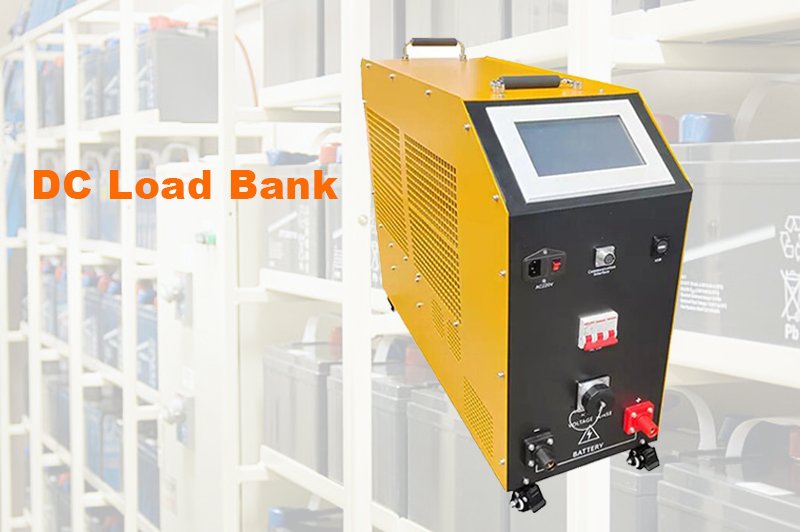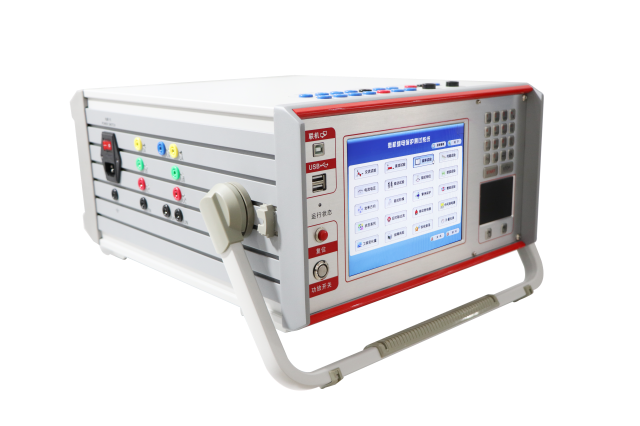What is battery load bank ?
Battery load bank is a device that is used to test the performance and capacity of batteries by subjecting them to a simulated load, which realize the constant discharge at the set value by regulating continuously the discharge current. This equipment applies a load to the battery and measures the voltage, current, and capacity of the battery during the discharge cycle. By doing so, the equipment can accurately determine the state of the battery, including its capacity, power output, and overall health. The results of the test can help identify any issues with the battery and determine whether it needs to be replaced or serviced. This type of testing equipment is commonly used in industries such as automotive, data center , power system , telecommunications, aerospace, and renewable energy.
How to used the load bank ?
- Determine the load requirements for the battery or power system you wish to test.
- Select a rated DC load bank to handle the load requirements of your system.
- Connect the battery or power system to the DC load bank. Typically connecting the positive and negative terminals of the battery or power source to the corresponding terminals on the load bank using appropriate cables.
- Turn on the DC load bank and set the load to the desired paraemtner using the load bank’s controls. Ensure that the load bank is within its capacity and the load is applied gradually to avoid any sudden voltage drops or spikes.
- Monitor the performance of the battery or power system using suitable measuring instruments data acquisition system. Observe the voltage, current, and power levels and record the readings for analysis.
- Adjust the load as needed to simulate real-world conditions and identify any issues with the system’s performance. Gradually increase the load to its maximum capacity and check if the system can maintain stable output levels. Alternatively, decrease the load to observe the battery’s discharge characteristics.
- After completing the test, gradually reduce the load and turn off the DC load bank. Disconnect the cables from the load bank and the battery or power source. Store the load bank in a safe and dry location as per the manufacturer’s instructions.
How often should battery discharge load testing be performed?
According to the standard EEE 450 for flooded lead-acid batteries, IEEE 1188 for sealed lead-acid batteries, and IEEE 1106 for nickel-cadmium batteries, battery discharge load testing should be performed at least once every six months. This testing should be done at the 50% discharge level to accurately assess the battery’s capacity and health. However, in critical applications, such as in data centers or emergency backup systems, battery load testing should be done more frequently, typically every three months or even monthly, to ensure the reliability and performance of the batteries.
What factors should I consider when evaluating battery discharge load ?

We understand that selecting the right battery discharge load testing equipment can be a daunting task, especially given the wide range of options available in the market.
In this article, we will guide you through the various factors that you need to consider when evaluating battery discharge load testing equipment. By the end of this article, you should have a good understanding of what to look for when selecting the right equipment for your needs.
Capacity and Accuracy
One of the critical factors that you need to consider when evaluating battery discharge load testing equipment is capacity and accuracy. The capacity of the equipment refers to the maximum amount of current that it can discharge from the battery, while the accuracy refers to how precisely it can measure the current and voltage during the testing process. It is important to choose equipment that can handle the expected load and accurately measure the battery’s performance.
Safety Features
When dealing with high-voltage and high-current equipment, safety should always be a top priority. It is essential to look for equipment that has safety features such as overload protection, short-circuit protection, and overvoltage protection. These safety features will help to prevent damage to the equipment and ensure that you and your team are safe during the testing process.
User-Friendliness
Another important factor to consider is the user-friendliness of the equipment. The equipment should be easy to set up and use, with clear instructions and user manuals. The interface should be intuitive and user-friendly, allowing you to easily navigate through the various testing parameters and configurations.
Durability and Reliability
Battery discharge load testing equipment is a significant investment, and you want to make sure that it is durable and reliable. Look for equipment that is made of high-quality materials and has a proven track record of reliability. You should also consider the warranty and after-sales support offered by the manufacturer.
Compatibility
Before selecting battery discharge load testing equipment, you should consider the compatibility with the batteries you are testing. Different types of batteries require different testing methods and equipment, and you want to ensure that the equipment you select is compatible with the batteries you are testing.
Why some clients choose us ? The reliable quality , reasonable pricing, adherence to international standards, and no-worry aftersevice are the main reason that some client choose us. Our battery load bank uses advanced technology to ensure the safe and reliable operation of your batteries. Our equipment can test various types of batteries, including lithium-ion, lead-acid, and nickel-metal hydride batteries, and measure multiple parameters such as capacity, voltage, and internal resistance. We continuously optimize our equipment to ensure that you get the best testing results. In addition, our products have excellent durability and reliability, and you can use them with confidence.






